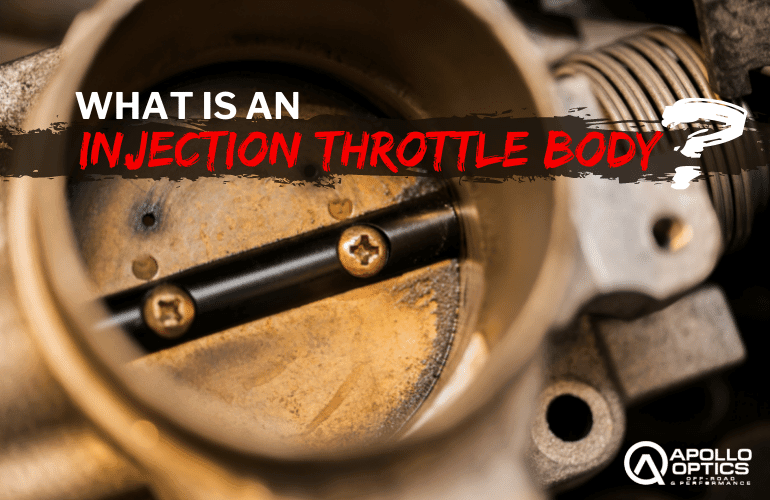 It is no secret that an internal combustion engine requires sufficient fuel delivery to operate in an efficient manner. However, various methods of fuel delivery have been employed throughout the years with varying degrees of success. For decades, the vast majority of gasoline engines relied upon the use of one or more carburetors to provide each cylinder with fuel-rich air for combustion. In recent times, however, cylinder specific fuel injection has taken center stage.
It is no secret that an internal combustion engine requires sufficient fuel delivery to operate in an efficient manner. However, various methods of fuel delivery have been employed throughout the years with varying degrees of success. For decades, the vast majority of gasoline engines relied upon the use of one or more carburetors to provide each cylinder with fuel-rich air for combustion. In recent times, however, cylinder specific fuel injection has taken center stage.
Often forgotten, throttle body injection is an alternative form of fuel delivery which rose to prominence during the transitionary period between carburetor and fuel-injected engines. Throttle body injection served as a blending between both aforementioned forms of fuel delivery and was implemented by a number of manufacturers throughout the 1980s and 1990s.
The Rise of TBI Fuel Delivery
The advent of TBI (Throttle Body Injection) technology served as a means to an end of sorts. During the early 1970s, new emissions-related mandates were imposed upon the automotive industry by the federal government. In a bid to minimize pollution and greenhouse gasses, legislation was passed that forced manufacturers to reduce the amount of smog produced by their vehicles.
In an effort to comply with these new mandates, manufacturers began searching for the most efficient way to reduce vehicle emissions. It was soon discovered that more precise combustion yielded less undesirable exhaust output. In order to achieve a higher rate of combustion efficiency, several manufacturers began equipping their vehicles with electronically controlled carburetors, also known as feedback carburetors.
These revised carburetors relied upon early ECU modules to receive and interpret data from several sensors. This computer would collect inputs from a vehicle’s oxygen sensors, throttle position sensor (TPS), and manifold absolute pressure sensor (MAP) in order to determine the amount of fuel that was needed to produce an ideal air/fuel mixture for optimal combustion.
However, the efficiency of these systems was effectively limited by a carburetor's dependency upon intake manifold vacuum to pull fuel into the carb’s venturi. If a fluctuation in vacuum occurred, operational irregularities would often result.
Engineers began pondering the notion of how best to rectify such issues, and the use of pressurized fuel delivery rose to prominence. While fuel injection systems, in their most primitive form, had been utilized to some degree by various manufacturers since the 1950s, this form of fuel delivery was viewed by many as cost prohibitive. A number of manufacturers opted instead for the use of throttle body injection.
TBI units could be bolted to an engine’s intake manifold in place of earlier carburetors, thereby reducing the complexity of conversion. TBI systems also proved to be more than capable of delivering a reliable dose of atomized fuel to an engine’s combustion chambers.
What Is an Injection Throttle Body?
An injection throttle body is a unitized fuel/air delivery device that mounts to a centralized point along an engine’s intake manifold. A throttle body of this style features 1-2 fuel injectors, which dose fuel through an open throttle plate. Injection throttle bodies look similar in appearance to a traditional carburetor but deliver fuel under pressure rather than solely by vacuum.
TBI fuel systems create fuel pressure through the use of a fuel pump, which is commonly mounted within a vehicle’s fuel tank. Fuel delivery is controlled by a throttle body-mounted fuel regulator. Meanwhile intake airflow is metered by a throttle plate, which opens and closes to meet throttle demand in real-time.
Numerous manufacturers adopted the use of TBI technology throughout the 1980s and 1990s, including Chevrolet, Nissan, Ford, and Honda. At the time of its introduction, throttle body injection served as one of the first EFI systems (electronic fuel injection) to be used substantially in automotive production.
Several parts manufacturers, such as Holley and Edelbrock now sell aftermarket TBI conversion kits. These kits utilize specialty adapters/gaskets in order to make carburetor-to-TBI conversion possible. This has become a popular modification with those who wish to leave carburetor-related reliability issues in the past.
Why Did TBI Fall from Favor?
Today, factory use of TBI fuel delivery systems has largely gone by the wayside. The mid-1990s served as the end-of-the-line for this type of fuel delivery, as alternative forms of electronic fuel injection rose to prominence. In almost every regard, the reign of throttle body injection had simply run its course.
In the eyes of most manufacturers, throttle body fuel injection was never intended to be a permanent staple of engine design. In reality, throttle body injection served as the simplest and most cost-effective means of reaching compliance, with increasingly stringent emissions standards of the day.
At the time, the implementation of multi-port fuel injection was far less feasible than it is today, as a significant amount of engine revision would prove necessary to accommodate such an update. On the other hand, TBI units could be simply bolted in place of an engine’s carburetor, thereby reducing the need for engine redevelopment.
However, most manufacturers began looking well into the future, realizing that any future amendments to federal emission standards would quickly render their TBI-fueled engines non-compliant. One by one, auto makers began phasing out their older powerplants, many of which had come of age during the era of carbureted fuel delivery.
Multi-port fuel injection grew increasingly popular and became a mainstay of the automotive industry. Fuel delivery systems of this nature utilized a separated injector for each cylinder, fed by a dedicated fuel rail. Multi-port fuel injection proved to be more efficient than throttle body injection, as fuel could be metered in a more reliable manner.
The advent of multi-port fuel injection also opened the doors for future engine efficiency-related advancements, such as selective cylinder deactivation. Featured in many newer vehicles, selective cylinder deactivation cuts power to a specified number of cylinders when cruising at steady speeds to minimize fuel consumption. The use of such technology would have been impossible in TBI-fueled engines, as fuel dosage was not metered on a cylinder specific basis.
Should You Convert To TBI?
As previously mentioned, numerous carburetor-to-throttle body injection kits are currently available for purchase. However, this begs the question: why would conversion to TBI be necessary?
Carburetors can often be difficult to tune to achieve maximum efficiency. While a certain amount of fine tuning is also necessary with the use of an injection throttle body, the extent of needed tuning is nowhere near what is needed with carburetor usage.
Throttle body injection also tends to provide more consistent fuel delivery than that afforded by carburetor use. This stems from the fact that a TBI system uses pressure as a driver or fuel delivery, while a carburetor relies upon engine vacuum. Any fluctuations in the vacuum that occurs can have a negative impact on fuel delivery rates with the use of a carburetor.
In almost every regard, the installation of a TBI unit serves as a substantial upgrade over the continued usage of a vehicle’s stock carburetor. This modification, though relatively simple to perform, can prove substantially beneficial in relation to engine performance and reliability.

